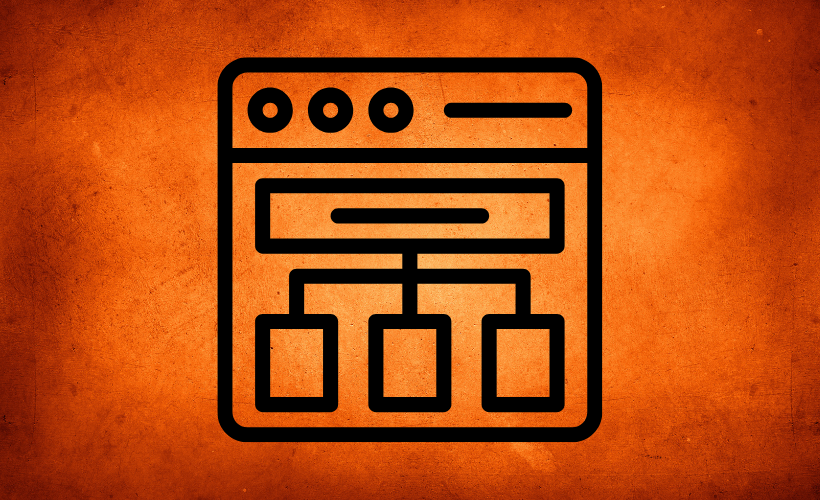A Google Sitemap is a file that shows search engines all the important pages on your site. It helps Google understand your website structure better.
For example, if you have an online shop with many products, a sitemap helps Google find every product page easily. This way, your items can appear in search results.
You can submit the sitemap to Google Search Console. Then Google crawls the pages faster, which improves indexing and site visibility.
How It Works in Google Search Console
Now let’s look at how a sitemap actually works in Google Search Console. This process shows you how Google reads, crawls, and indexes your website pages step by step.
- Submit Your Sitemap: In Google Search Console, you add the XML sitemap link of your site. This step notifies Google to read and follow your website structure. It’s the starting point for better crawling and indexing.
- Google Crawls URLs: The sitemap guides Google’s crawlers to every important page on your site. Even deep or hidden pages become discoverable. This helps maximize coverage of your website in search.
- Faster Indexing: After crawling, Google stores valid pages in its index. This process allows them to appear faster in search results. It ensures your content reaches users quickly.
- Prioritizing Content: Sitemaps give Google hints about which pages are most important. This helps prevent key pages from being missed during crawling. As a result, your valuable content gets more attention.
- Error Reporting: Google Search Console highlights crawl issues, broken links, or blocked URLs. You can use this report to fix errors quickly. Solving these improves overall website health.
- Tracking Status: The tool shows which pages were indexed successfully. This lets you track what is live in Google’s search results. It also points out pages still pending indexing.
- Improving SEO: Monitoring sitemap performance helps keep content updated for Google. Fresh updates improve visibility and rankings. It ensures your site remains strong in search results.
Why do You Need a Sitemap for Your Website
Next, let’s explore why having a sitemap is important and how it helps your website get discovered and indexed by Google.
- Better Page Discovery: A sitemap makes it easier for Google to find every page on your site. Even if some pages don’t have many links, they still get noticed. This way, your important content won’t stay hidden.
- Faster Indexing: When you publish new content, a sitemap helps Google pick it up faster. Instead of waiting weeks, your updates can show in search sooner. This means people can reach your fresh content quickly.
- Perfect for Big Sites: If your website has a lot of pages, it can be hard for Google to crawl them all. A sitemap gives Google a clear map to follow. That way, nothing gets skipped or left out.
- Highlighting What Matters Most: With a sitemap, you can show Google which pages are most important. This gives your best content more chances to rank well. It’s like telling Google where to focus first.
- Finding and Fixing Issues: Google Search Console uses your sitemap to report errors like broken links or blocked pages. You can see the problems clearly and fix them. This keeps your website in good health.
- Boosting Visibility: Keeping your sitemap updated helps Google always see your newest content. The more fresh updates it finds, the better your chances of showing up higher. This helps more people discover your site.
- Helpful for New Websites: If your site is brand new and doesn’t have many links, a sitemap is a big help. It guides Google to your content right away. That way, you don’t have to wait long to be noticed.
How to Set a Site Map in Google Search Console
Now, let’s go step by step and see how you can set up a sitemap in Google Search Console to help Google crawl and index your website efficiently.
- Log in to Google Search Console: Go to Google Search Console and sign in with your Google account. Select the website you want to manage from your property list. This is the first step to start controlling how Google sees your site.
- Go to the Sitemaps Section: In the left-hand menu, click on “Sitemaps”. This section is where you can add new sitemaps and monitor existing ones. It helps you manage how Google crawls and indexes your website pages.
- Enter Your Sitemap URL: In the “Add a new sitemap” box, type your sitemap URL. For example, for your site
whatisguide.com, enterwhatisguide.com/sitemap.xml. This tells Google exactly where to find all your website pages. - Click Submit: After entering your sitemap URL, click the Submit button. Google will now begin reading your sitemap and crawling the listed pages. This starts the process of indexing your content in search results.
- Check Submission Status: Once submitted, your sitemap will appear under “Submitted sitemaps.” Google will show how many URLs were discovered and whether there are any errors. This helps you track the indexing progress.
- Monitor and Fix Errors: If Google reports any errors like broken links or blocked pages, click on the error for details. Fixing these issues ensures that all your important pages get properly indexed.
- Instant Indexing Options: While Google crawls your sitemap automatically, you can speed up indexing by using the URL Inspection Tool in Search Console or the instant indexing feature in Rank Math. This makes new pages appear in search results faster.
Conclusion
A sitemap helps Google understand your website and find all important pages easily. It ensures your content gets indexed properly.
Submitting it in Google Search Console helps Google prioritize your pages for crawling. This is especially helpful for new or updated content.
For instant indexing of new pages, you can use Rank Math’s instant indexing feature. This speeds up the process so your content appears in search results faster.
Keeping your sitemap updated ensures your site stays healthy and visible. Rely on Google Search Console for priority crawling and Rank Math for quick indexing.
** FAQs **
1. How can I check if my new page is indexed by Google?
You can use the URL Inspection Tool in Google Search Console to see if your page is indexed. It also shows any errors or issues that may prevent indexing. By checking here, you can make sure your content is appearing in search results as intended.
2. Why aren’t my pages showing up in Google even after submitting a sitemap?
Sometimes Google takes time to crawl new pages automatically. You can speed up indexing by using the URL Inspection Tool or Rank Math’s instant indexing feature. This helps your new or updated content appear in search results faster.
3. Can a sitemap really help Google find hidden pages on my website?
Yes, a sitemap lists all important pages, including those not linked prominently. This allows Google to discover pages that might otherwise stay hidden and ensures they get indexed properly.
4. What should I do if Google reports errors in my sitemap?
Check the details of the errors in Google Search Console, like broken links or blocked URLs, and fix them. Once corrected, Google can crawl your pages properly, making sure all your content gets indexed.
5. How often should I update my sitemap for my website?
You should update your sitemap whenever you add new pages or make major changes. Submitting the updated sitemap ensures Google sees the latest content and keeps your website fresh in search results.



